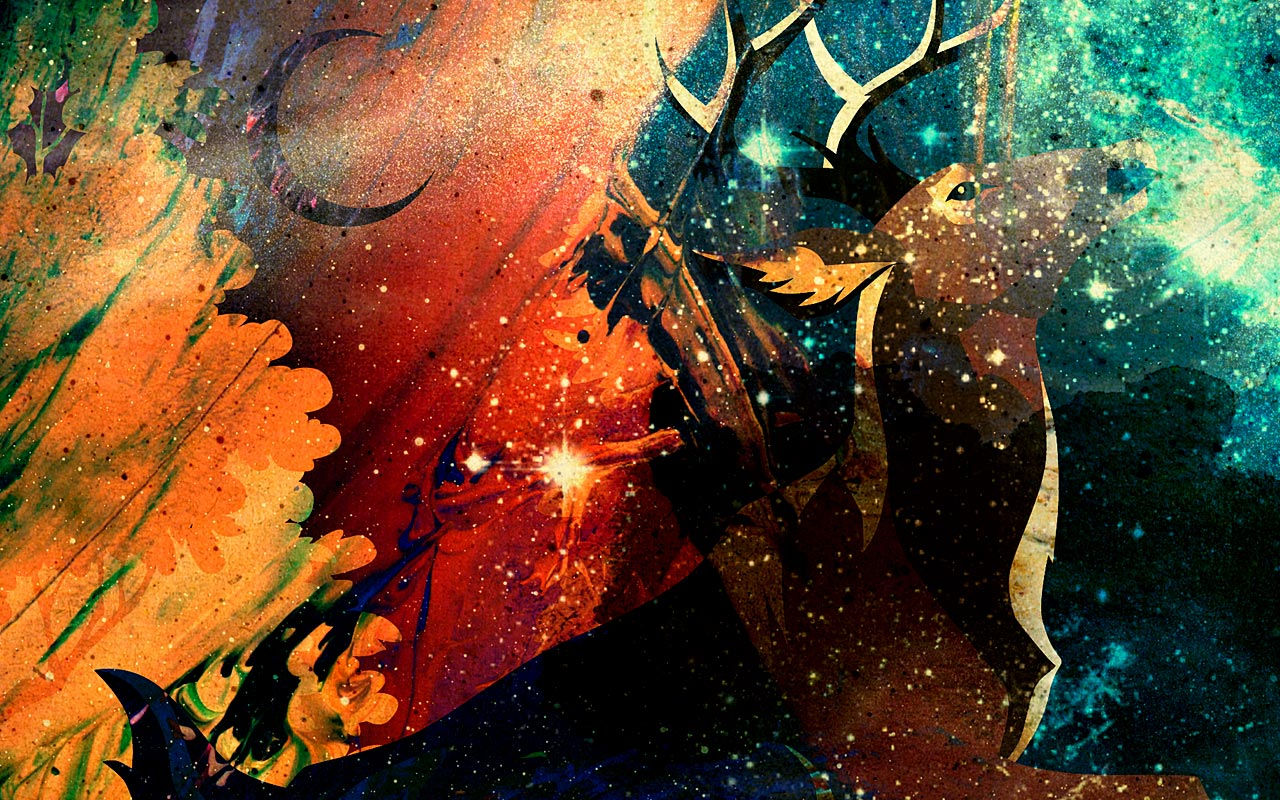
the expression of a dream
Andre Derain and Henri Matisse retired to the countryside during the summer months of 1905 to work side by side outside of the constraints of modern life. As two of the most influential artists of the early 20th century, Derain and Matisse took these opportunities to further break from tradition in the hopes of releasing their inner vision as modern artists. Hence, the Expressionist period was born. During this time, Derain produced one of the most recognizable portraits of Henri Matisse (below left), even to those not familiar with most art from this period. The background is a mix of softened colors. The brushstrokes are thick but smooth, leaving in their wake a trace of the representational. The facial features are extended just enough to lend an air of mysticism to an otherwise recognizable face, and Derain’s use of shadowing is genius in its ability to appear both realistic and unnatural. Unlike many of the famous Renaissance painters whose works were known for capturing the incredible likenesses of their subjects, Derain’s genius is in the ability to capture the essence of his comrade through an exploration of his temperament; this particular artistic purpose is what came to define Expressionism as an era of art.
What these two men painted, and what other influential artists like Georges Braque and Kees van Dongen continued to paint throughout the following few decades morphed between Expressionism and Fauvism, from les fauves (French for wild beasts). Their collective works, which challenged the notions of space, color, and theme, represented some of the starkest breaks from representational art to date. The artists relied very little on their academic training, using it merely as a jumping off point to achieve the greater goal – that of translating the emotional experiences of their lives to canvas. One of the greatest breaks from tradition was the move away from traditional depiction of space. Some of the most influential works from the Fauvist movements were influential simply because they existed without reference to space or point of view. An artist’s first tool as a student is perspective, and while the Fauvist and Expressionist artists were masters of creating perspective, they tossed it out the window in favor of creating works that mirrored their inner consciousness.

Andre Derain, 1905

Franz Marc 1911

Egon Schiele, 1917
“The aim of painting is not to reflect history, because this can be found in books. We have a higher conception. Through it, the artist expresses his inner vision.”
While artists like Matisse and Van Gogh are generally more well-known outside of the art world, the Expressionist movement taking root in Germany was forming simultaneously into a number of various sectors. Around the time of World War II, these German and Austrian Expressionists were among the most despised groups of artists in the eyes of the Axis powers. As Hitler and the Nazi party took over rule in Germany and Austria, the German Expressionists were famously scorned in the Degenerate Art Exhibition. In Hitler’s mind, being the supreme ruler of Germany meant his best shot at full control was exhibiting major cultural control. The propaganda films shown prior to and during the war were one aspect, while the control over art and architecture was a whole other. Hitler and his men gathered up all the artwork in their reign that they felt represented the best parts of society (any art depicting Aryan and idyllic lifestyles easily made the cut) and showcased it alongside a separate exhibition that they called the Entartete Kunst, German for “Degenerate Art.” Hitler used this exhibition (which consequently had thousands more visitors attend than his opposing exhibition of “appropriate” art) to show his public the parts of society that they believed to be unworthy and unacceptable. The Expressionists, among many other groups of artists, had their own special corner.
Egon Schiele was another Austrian artist who represented this same brand of insurgence against tradition. Looking back to Manet’s rejected Salon piece, Le Dejeuner sur l’herbe, in which Victorine Meurent was posing lasciviously towards the camera, it is no surprise that the Expressionists carried on that new idea of depicting women outside of what was seen as proper in society. The 1917 painting Sitting Woman with Legs Drawn Up (above right) is a prime example of what Schiele was best known for – his works tended to suggest a more bizarre, lewder nature of women, as in this piece in which the figure is rendered rather distortedly and portrayed with her legs splayed open. Suffice it to say that the more academically-natured critics of the time had a hard time jumping on this bandwagon. If that isn't rebellion, then I don’t know what is.
"Everyone who reproduces that which drives him to creation with directness and authenticity belongs to us."